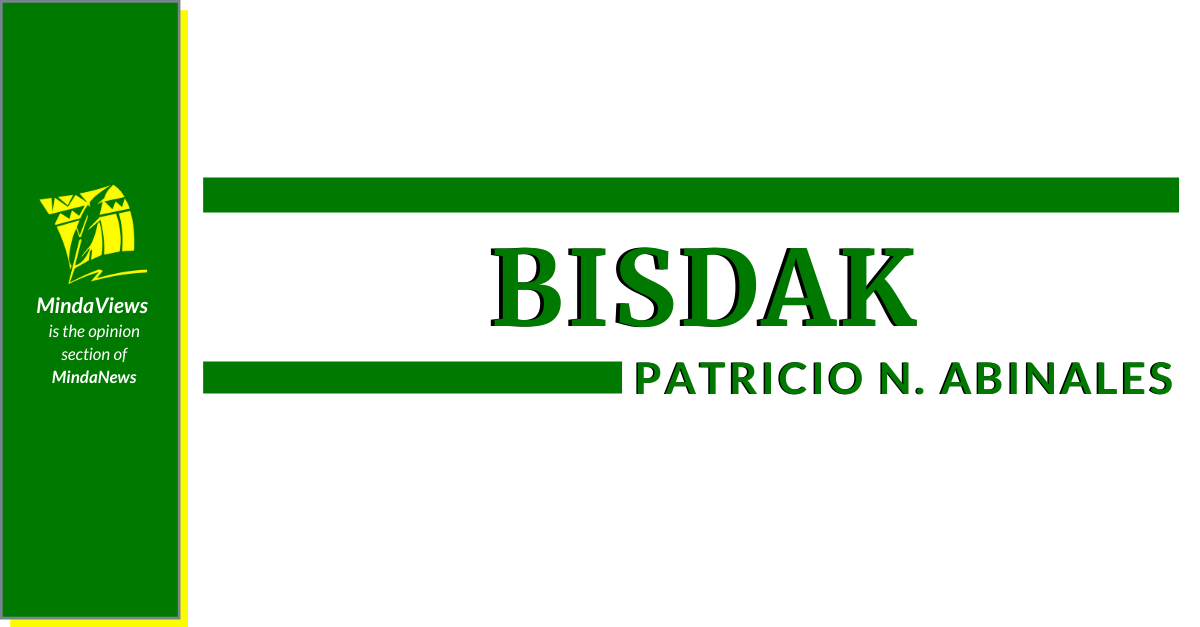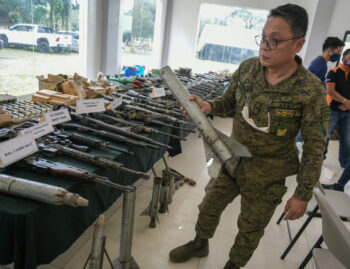
HONOLULU (MindaNews / 08 September) – There is no denying that if one were to do an overall survey of Mindanaoan-authored works that have found print, they lag behind those penned by scholars and writers in the imperial capital. There may be several reasons for this gap, of which marketability is the foremost reason. Non-academic presses like Anvil would put profit margin into prime consideration when accepting or rejecting manuscripts. Academic presses do likewise, although their directors or executive boards may set aside profit for the sake of a manuscript’s significance to its field of study. The review process separates the better academic presses from the inferior ones. Here, I profess my bias toward the only academic Press to which I would submit my manuscript – the Ateneo de Manila University Press.
You line up Ateneo’s more recent publishing record (or reprinting of local editions) to other presses, and it has the country’s top scholars on that list. We are talking here of the likes of the Marcos/Duterte acolyte Reynaldo Ileto, the Jesuits John Schumacher and Albert Alejo, the public intellectual Edberto de Jesus, our foremost intellectual Resil Mojares, Kyoto Professor Caroline S. Hau as well as her protégé at the University of California at Berkeley professor Lisandro Claudio. Ateneo faculty members who helped redefine the contours of Filipino life, from the late Horacio de la Costa to the recently retired Filomeno Aguilar, Jr., and the rising young urban historian Michael Pante, have also found their works printed by their alma mater. And there are several more, including scholars from abroad wanting to reach out to a Filipino readership (from Alfred W. McCoy to Vicente Rafael to Otto Von Muijenberg).
Perhaps, except for several older scholars, Ateneo Press found their works worthy of publishing after these were seriously vetted by their peers from both Philippine academia and non-Filipino Philippinists. The Ateneo Board has made this its mission – only when its internal and external examiners give the signal – will it also approve the publication of a manuscript. The impact of such works (from Ileto’s classic Pasyon and Revolution to Mojares’ Brains of the Nations on, say, the interpretation and teaching of Philippine history cannot be underestimated, much of this thanks to serious peer review. Our local intelligentsia must consider this when planning to submit their works: be ready to be evaluated methodically.
But the complaint is also unfair if you take a second look at who Ateneo Press published regarding Mindanao. Again, I am referring you dear readers to the list in Part 1 of this essay (https://mindanews.com/mindaviews/2023/08/bisdak-1st-of-3-parts-mindanao-is-not-ignored-anymore/), and you will notice how much Ateneo Press has honored Mindanaoan authors. I wrote this comment in a Facebook post about the issue and came up with the following authors who are Mindanaons by reasons of place of birth:
Miguel Bernad (Ozamiz, Xavier University)
Jowel Canuday (Davao City; teaches at the Ateneo de Manila Anthropology- Sociology Department)
Patricia Dacudao (Davao City; teaches at the Ateneo de Manila Department of History)
Karl Gaspar (Davao; retired pastor)
Michael Mastura (Maguindanao; Sultan Kudarat Islamic Academy)
Resil Mojares (Dipolog City; University of San Carl0s, Cebu)
Maria Morales (Davao; retired civil society activist)
Jose Sescon (Iligan; Ateneo de Manila University)
Wilfredo Torres (Davao City; PhD candidate, George Mason University, Virginia, USA)
Samuel K. Tan (Jolo; UP Diliman)
Ricky De Ungria (Manila; UP Mindanao)
Virginia Villanueva (Manila, Sulu, Manila)
Criselda Yabes (Zamboanga, Manila, France)
Then we have non-Mindanawons who write from abroad whose works, if you read them carefully, show where their hearts are. Let me list a few who I know and their respective works:
Ediberto Alegre, Tagalog (Biyaheng Pinoy: A Mindanao Travelogue)
Ligaya Fernando Amilbangsa, Tagalog (Ukkil: Visual Arts of the Sulu Archipelago)
Bruno Bottignolo, Italian (Celebrations with the Sun: An Overview of Religious Phenomena among the Badjao)
Oliver Charbonneau, Canadian, Quebecois (Civilizational Imperatives: Americans, Moros and the Colonial World)
Miriam Coronel-Ferrer, Tagalog (Region, Nation, and Homeland: Valorization and Adaptation in the Moro and Cordillera Resistance Discourse)
Simeon DumDum, Jr. Cebuano (Marawi and Other Poems)
Ronald Edgerton, American (People of the Middle Ground: A Century of Conflict and Accommodation in Central Mindanao, 1880s-1980s)
Peter Gowing, American (Mandate in Moroland: The American Government of Muslim Filipinos, 1899-192o)
Shinzo Hayase, Japanese (Mindanao Ethnohistory Beyond Nations. Maguindanao, Sangir and Bagobo Societies in East Maritime Southeast Asia)
Reynaldo Ileto, Tagalog, Australia (Magindanao 1860-1888: The Career of Datu Utto of Buayan)
Francisco Lara, Tagalog (Insurgents, Clans, and States: Political Legitimacy and Resurgent Conflict in Muslim Mindanao)
Francisco Lara and Steven Schoofs, Tagalog and English (Out of the Shadows: Violent Conflict and the Real Economy of Mindanao)
Patricia Laurel, Tagalog (Dapitan Schoolboy: A Novel)
Thomas McKenna, American (Muslim Rulers and Rebels: Everyday Politics in the Southern Philippines) – Ateneo did not publish his classic book, but Anvil Publishing came in to fill in this unfortunate gap
You can get free access here: https://publishing.cdlib.org/ucpressebooks/view?docId=ft0199n64c&brand=ucpress
Manolete Mora, Australian (Myth, Mimesis, and Magic in the Music of the T’boli, Philippines)
Ma. Christine Mucyo, Tagalog (Sibod: Ideology and Expressivity in Binanong Dance, Music and Folkways of the Panay, Bukidnon)
Bienvenido Nebres, Tagalog (Managing Conflict, Building Consensus: The Xavier University Housing Project)
H. Arlo Nimmo, American (Very Far Place: Tales of Tawi-Tawi)
Gerard Rixhon, Belgian-Filipino (Voices from Sulu: A Collection of Tausug Oral Traditions)
Stuart A. Schlegel, American (Wisdom of the Forest: The Spiritual Journey of an Anthropologist)
Robin Thiers, Belgian (Tales of the Post-Plantation: Unlikely Protagonists of Modern Philippine Banana History)
James Warren, American, Australian (The Sulu Zone, 1768–1898: The Dynamics of External Trade, Slavery, and Ethnicity in the Transformation of a Southeast Asian Maritime State)
The list of authors published by Ateneo de Manila University Press shows discrepancies in which parts of the island are covered. Sulu, the island, and Moro Mindanao have the highest number of interests among authors published by the Press, while the rest are in the single digits. There are still communities in the island and the Sulu archipelago that scholars and public intellectuals – Mindanaoan and non-Mindanoan – must give attention to. There is much still that needs to be done.
[MindaViews is the opinion section of MindaNews. Patricio N. Abinales, an Ozamiznon, teaches at the University of Hawaii-Manoa. He studies the four-legged rat (a pestilence that brought famine in many parts of postwar Mindanao) and the two-legged rat (the politico)]







